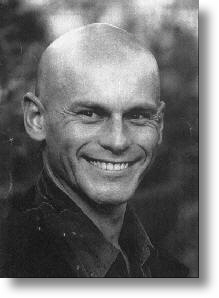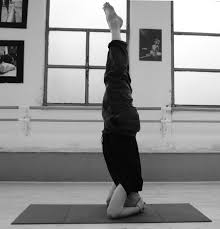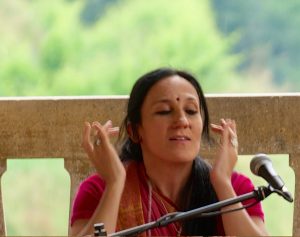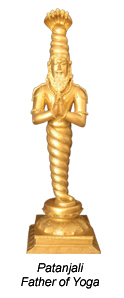Luana Marini Bellisari
Yoga arrived in a fundamental moment of my life. Between the 39ies and the 40ies, during a time of luck of trust to what I could have done as a woman
With Yoga we break the puzzle of each doubt and troubled thinking and we arrive at the pure source.
and as a Human being.
During my first step in to the yoga practice I have had often the feeling in losing my strength, that’s because yoga got in to my sensitivity and in to my emotions so deeply that after each practice, special those I made alone with my master, I was always crying.
An unbalanced step of what I was plus what I was living, emotions that sere driving me not under my control, were bringing me close to a feeling of a depression mood. After that time, and during the days I could switch on and off my faith and my original love and passion inside of me.
In my memories the action of the movement of a single muscle could giving me a new perception and development of conscious that I have lost in my body memory, and each of that were really connected with my personal movements (passages) of my single life in that moment. I was starting to live in and with me, muscular connection, breathing drive consciously, were just a few of the many things and situations were happens and I was slowly discovering.
Yoga becomes, when arrives to catch the personal world of a human being, cardinal and it transforms and turn on a source of light and a strategy of art of living at the same time.
There are thousand of interconnections between the physical body and the mindful body like with the sympathetic (SNS) and the parasympathetic (PNS). The experience of yoga itself shows the practitioner how he/she lives it’s on life. During an Asana, establishing the forces, bringing the right, creative a beauty and focusing on a gaze, while breathing is the only sound that vibrating in and outsider, in a unique experience that’s to be in that moment.
What leaves yoga after a session, is a sense of grounding and full perception in who we are, a deep calm and a clarity; it gives to the practitioner or the yoga student the way to realize something more about him self. Yoga surprise us and suddenly we recognize the message coming from inside , that’s we couldn ́t hear before. Slowly and deeply we became aware to steps at decisions or transformations wherever they where sleeping inside of us.
In different moment of our life we live the conditions of stress or depression, or under pressing. Here below summarizes the ways stress can undermine health.
1- Unbalanced function of the Immune System; 2- Increased Cholesterol;
3- Increased Inflammation;
4- Increased Triglycerides;
5- Decreases bone density;
6- Increased Blood Clotting;
7- Problems with memory;
8- Impaired wound healing;
9- Unbalanced sense of Appetite;
10- Poorer Sleep;
11- Unbalanced weight gains;
12- Increased sensation of Pain,
13- Fat deposited in Abdomen;
14- More Fatigue;
15- Increased resistance to Insulin;
16- Worsening of Mood;
17- Increased Blood sugar;
18- Adoption of less healthy habits.
Yoga as medicine: a treatment against stress and consequent diseases
When we think about what illness caused by stress in our modern life, first coming on our mind heatheache or neuralgic, stomach-aches, and intestine aches, we use to know that are kept as symptoms that can be cured with antypain medicaments, and the pharmaceutic system has developed a various and numerous pills called pain killer, that while reducing the pain suffered from the patience, stimulate and increase dependence, and don ́t help the incidence that the acute or chronic symptom could become a serious illness.
What is stress?
Stress is a natural response or reaction of our body to troubles or ultimatum. The response is a balance between an impetus and the reaction that appear. This physiologic pathway, the stress, can be also positive, when is an incentive to reach some goals, but often is more negative, through the aspect of its chronicity, that not allow the body to maintain It under the level ́s alert. The responsible molecule is the glucocorticoid that govern the stress response, and not regularized and unbalanced provoke harmful, suffocation, depression and paralysis. The connection between the glucocorticoids, that works through the cortisol, secreted from the hypothalamus affect the metabolism like the mind. That ́s why for ex, under an high level of stress we can loose or gain weight. So depending of the subject response, cortisol can be a potent ant- inflammatory agent or over increased without balance the
create a disease. Cortisol’s ability to prevent the promulgation of the immune
first actor to
response , through the lack of its regulation and perception which determines
the proliferation of lymphocyte;
the individuals suffering from chronic stress is
highly vulnerable to infection.
Stress is unavoidable. Our bodies are designed to react to our environment in
an effort to preserve homeostasis or to stable a balance. Arming ourselves
with an understanding of the mechanisms, agonists and antagonists of the
stress response, however, positions us to minimize stress and its impact on
our minds and bodies.
The good news is that stress levels rest largely on our own behaviour and
decisions and that we can optimize our bodies responses to stress based on
how we live our daily life.
“Yoga slows down the fluctuations of the mind” Patanjali
What happen after the first yoga class experience, is a special turning down of mental loops, but also a deep relaxation of all the body. Joints and muscle, bones and tendons it seemed to be so relaxed that in Shavasana they wont move anymore connected deeply with the ground, and after we stand, instead a increasing energy flows in to our body, we are
The author of the Yoga Sutras (Patanjali) is teaching us here has to do with a
method of quieting the mind, which is a system of practices that leads us to
mental peace.
simply connected with all and our mind and our eyes are so open that we have another looking appeal. The facial expression change showing a deep joy and radiance. We have calm and deep power energy, not excitation just our vital energy that spread through the entire body. If we maintain our yoga practice, these feeling they awakening a constant calm place inside our heart and in different situation, extreme and stressful, we are more aware of a distant calm space that let us deal our busy routinely not that chaotic as it seems, so as it is, our modern life. Realizing it have a different look on it, helps to make it easy, with many things .
Experiences
Since I started to teach Yoga I noticed that behind a choice of doing yoga there is fundamentally two important motivations; one is about the healthy/beauty body, one about the personal mental process that connected with the emotion let the person feel an outsider or uncomfortable and these feeling are one linked with the other ones.
Both of the motivations are supported each other in most of the cases where comes from practitioner into the same gender, often women. I guess our society still make women the focal point of what is consider to have a smart life or to be smart in general. So commercial advertising, push us to believe, that more we have a beautiful body, and a smart look, better we benefit, and of course, men believe that this is the icon of a woman to look for. This obvious snake that bit itself, provoke, an higher consume of products in the industry of cosmetic and fashion-women side, and conditions an other high consume, in the automotive industry and technology- men side
This mechanism brings people to generate a sense of frustration, that slowly bring to develop another series of dissatisfactions and often chronicizes a kind and disparate symptoms.
When a person decide to participate to a yoga class has for sure something that he/she tried to find out from him/herself without success, or already knows something is wrong, but is tired to try to resolve with the usual way and look for something alternative.
When we come out from a meditation or after a full, deep and intense yoga practice, we have a kind of awakening that is completely different from other situations we live in. That’s a pure and instinctive wakefulness; we resolve and arrive at our true nature.
We create involuntarily a kind of deconstruction of the mind, we break the puzzle of each doubt and troubled thinking and we arrive at the pure source: a state of calmness close to the consciousness of our inner peace and awareness and we reach instinctively the awaking of our vibrations and perceptions that align with the vibrations and soul of the earth.
My experiences in the last 7 years are that half of the person, find out the solution and start to change something or more of its proper life, a 30% found out what it ́s the problem and realize that yoga helps to support or encourage the process of changement, the 15 % has no idea of what happen inside since it starts to practice yoga, but for sure at the end of the class feels better, light and a sort of deep freedom, that any alcohol, food or drugs gave before; a 5% sees that the process is long, and often traumatic and decide to interrupt then course.
Appendix
Sources – Books
The Yoga Sutra of Patanjali
The heart of Yoga: Developing a personal practice by T.K.V. Desikachar
Yoga as a medicine: The Yogic prescription for health and Healing, by T. McCall, MD
https://www.yogapedia.com
http://dujs.dartmouth.edu/2011/02/the-physiology-of-stress-cortisol-and-the- hypothalamic-pituitary-adrenal-axis/#.WmdzNq7nEW5.mailto
https://www.frontiersin.org/articles/10.3389/fimmu.2017.00670/full
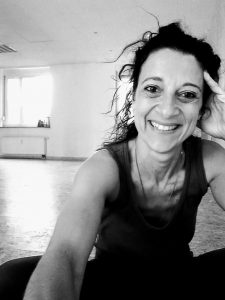 info@yalpyogaberlin www.yalpyogaberlin.com
info@yalpyogaberlin www.yalpyogaberlin.com